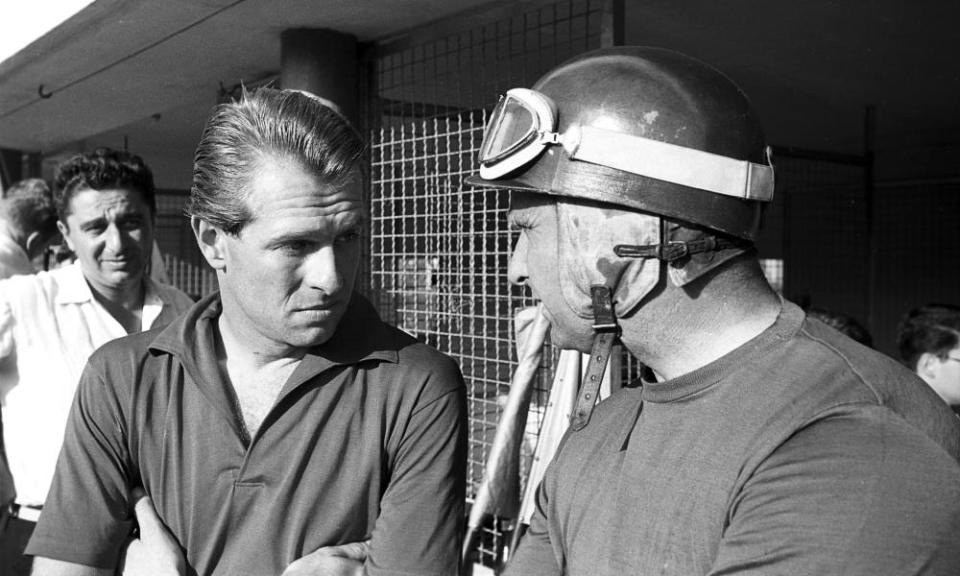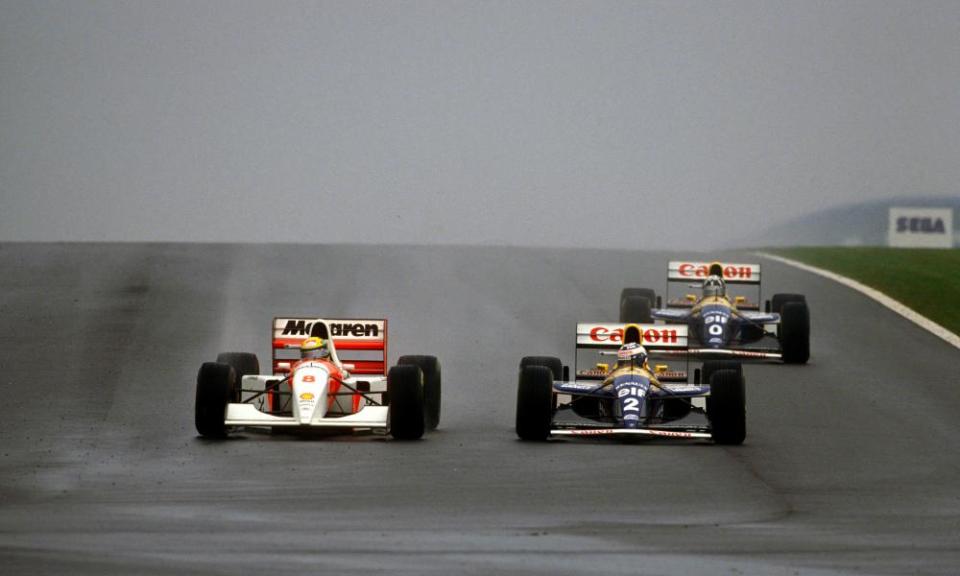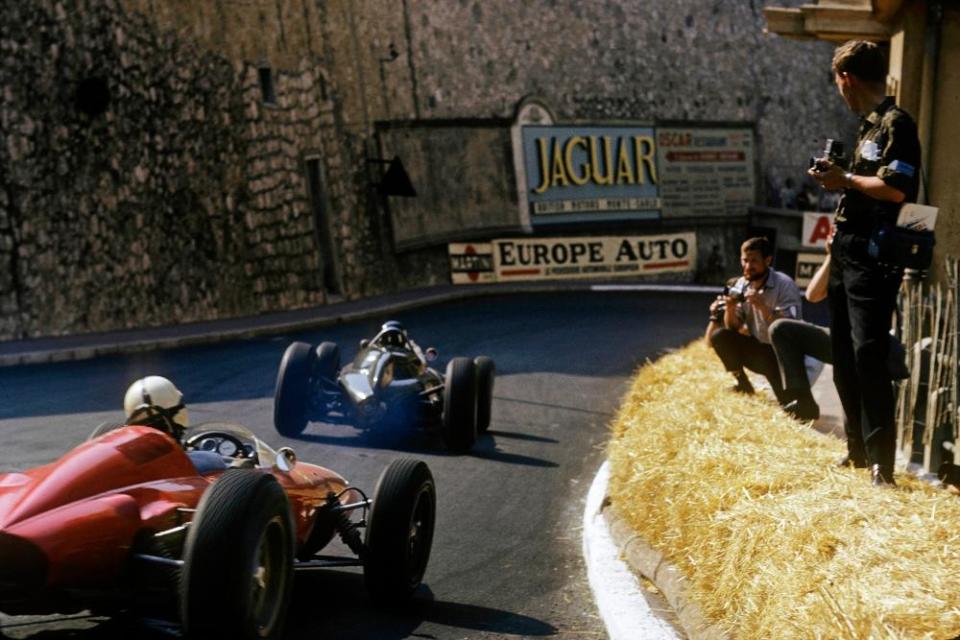Clark, Brabham, Lauda, Senna: 70 years of Formula One remembered
Formula One’s challenge of man and machine to move relentlessly forward will this weekend glory in its past. Seventy years since the inaugural world championship, the 70th Anniversary Grand Prix at Silverstone will honour a rich, fascinating story.
On Sunday Silverstone will host the 1,023rd F1 world championship race since this circuit held the first on 13 May 1950. Then, professionals and enthusiastic amateurs had already been racing what were known as grands prix for decades. In 1950 the fledgling Féderation Internationale de l’Automobile (FIA) brought regulation and structure to present one competition: the Formula One World Championship.
The King and Queen were at Silverstone to watch. Alfa Romeo, dominant at the time, drove their cars on the public roads to the circuit from Banbury but Ferrari, the only team to have competed in every one of those 70 years, were not present at that opening round, still preparing their cars for the second meeting at Monaco.
It was a different age in every way. There were the ubiquitous hay bales lining the circuit, the officials housed in a double decker bus, oil-streaked drivers, oil-streaked mechanics wielding tools recognisable to all, the spanner not the laptop. When Alfa’s Giuseppe Farina won the race he did so in a linen helmet. The drivers wore cotton shirts and trousers to stay cool in the fearsome heat generated by the heavy, front-engined cars.
Since then, everyone involved with the sport and its fans has a tale to tell of what brought them to F1. Much as it is derided by naysayers as a technological competition (which it undoubtedly is, just not all it is), clearly the drivers over the years have made the greatest impression.
The FIA president, Jean Todt, is no different from many fans. The 74-year-old has loved the sport since he was a child and was in charge of Ferrari from 1994 to 2007, overseeing five consecutive titles for Michael Schumacher. “It is about passion,” he says when considering F1’s 70-year history. “My passion was for Jim Clark, Dan Gurney, Jack Brabham. I never met Jim Clark, I saw him race and he was my hero. Dan Gurney was the only driver I asked for an autograph. I still have it.”
Related: Ayrton Senna: 25 years since F1 lost its flawed, fascinating hero | Richard Williams
Todt has a clear emotional attachment with the sport through the drivers. He is still moved when he considers the friendship he formed with the five‑time champion Juan Manuel Fangio while rallying in Argentina in the late 1970s.
Similarly Todt’s former colleague at Ferrari, Ross Brawn, now sporting director at F1, shares this very personal affection. He started going to races in the 1960s with his father who worked for tyre supplier Firestone. “One of my boyhood heroes was Jim Clark, his talent matched with his shy nature made him pretty special and he raced everything,” says Brawn. “My other hero was Stirling Moss, brilliant in everything he drove and I now own one of his old racing cars.”
Brawn led his own team, Brawn GP, to the 2009 title and has seen every angle of F1 since being a child peering through a fence. He has a succinct appreciation of its longevity. “Speed, heroes and rivalries. F1 provides the perfect mix that every sports fan wants. They want to be thrilled, they want to get behind someone and see them win and they want to see battles that define races and eras. Year after year F1 has given that to fans, be it Prost versus Senna, Hunt versus Lauda or Rosberg versus Hamilton. It’s always there and it’s always played out at 200mph.”
These characters have been defined in many different ways. There has been sacrifice. Peter Collins, in with a shout of the championship at the last round at Monza in 1956, voluntarily handed his car to Fangio to ensure the Argentinian could take the title. “It’s too early for me to become world champion – I’m too young,” he said modestly of his chivalrous gesture. He was duly in the running to take the championship two years later until he was killed at the German GP. His friend Mike Hawthorn took the title, the first Britain to do so, but retired afterwards, inconsolable at Collins’s death.

There has been bravery, not least in simply driving in a sport where the expectation of serious accidents or death had become normalised. Yet across 70 years it is hard not to consider Niki Lauda’s return to racing just six weeks after being pulled from the fiery wreckage of his car at the Nurburgring in 1976 as an outstanding act of mental and physical courage. It ranks as one of the greatest comebacks in the sport.
Related: Jim Clark, the indecisive farmer who was transformed behind a wheel | Richard Williams
Lauda’s analytical brilliance was only one aspect of talent that has fascinated, contrasted by the mercurial, almost otherworldly touch of Ayrton Senna. His win in 1991 in Brazil while his car was stuck in sixth gear was outstanding but surpassed by the qualifying lap at Monaco in 1988 where he was a second and half quicker than every other competitor and then Donington in 1993 in the rain, moving from fifth to first within a lap, his rivals helpless against his virtuoso technique in the trickiest of conditions.
The Brazilian was a complex man and driver, not easily pigeon-holed and not least because he too could be ruthless and cynical, traits that only make these characters seem more compelling. Taking out Alain Prost at Suzuka in 1990 is as much part of the Senna legend and F1 story and has been echoed by others since.

Senna’s death at Imola in 1994 also brought an urgency to the sport’s most fundamental shift in 70 years, the achievement of safety standards that has shaped it today. Certainly Bernie Ecclestone deserves credit for becoming F1’s promoter, uniting the teams to sell their commercial rights and creating the multibillion dollar behemoth with a global audience of 471 million in 2019. Yet he too, alongside the FIA, was instrumental in improving safety in racing that has stood as the gold standard in motorsport across the world, completing the work begun by three-times champion Jackie Stewart.
It is inescapable that, alongside the bravery and the brilliance, one of the overriding characteristics of F1 for much of its existence was that death hung over it like a spectre. Driver safety had not been factored into the technological arms race it had become in the 1960s. Clark’s death in an F2 meeting at Hockenheim in 1968 shocked racing. Clark, after all, had been one of the greatest of them all.
Circuits had not evolved with the higher speeds, trees and indeed houses still lined some and accidents often ended in fiery death. In 2019 Stewart told the Guardian that his wife Helen had counted 57 of his contemporaries who were killed during his nine-year F1 career.
Stewart led the campaign for change that began transforming the sport. From the introduction of fireproof overalls and drivers being belted into cars, to the adoption of runoff areas, to modern barriers replacing those hay bales and ultimately to the acceptance that the configuration of many tracks were simply too dangerous. The Nordschleife circuit at the Nurburgring, scene of one of Stewart’s greatest races in 1968, last hosted a grand prix the year Lauda was so nearly killed.

The change was long, slow and notably did not have universal support but it did happen. Ecclestone introduced a permanent race doctor and made medical centres, ambulances and medivac helicopters mandatory. Since Senna, with every avenue pursued, no drivers were killed on track until Jules Bianchi died after his accident at Suzuka in 2014. From the dark days this is perhaps the greatest legacy of these 70 years.
The grid on Sunday will be a far cry from how it looked in 1950, of course. The amateurs are gone, the garagistas of the 60s and 70s a distant echo of the slick corporate teams that now compete. Yet when the lights go out the fundamental proposition remains just as it was: man and machine in a fight to the flag.

 Yahoo News
Yahoo News 
